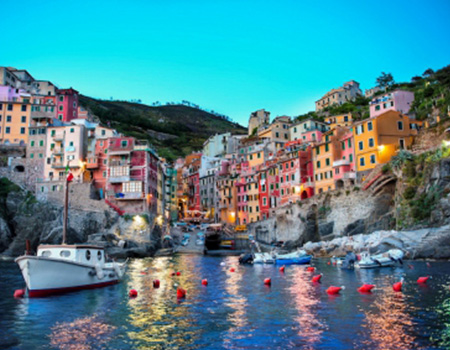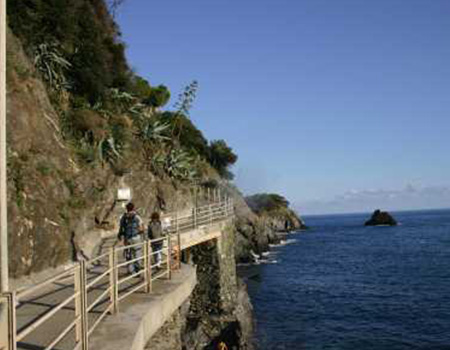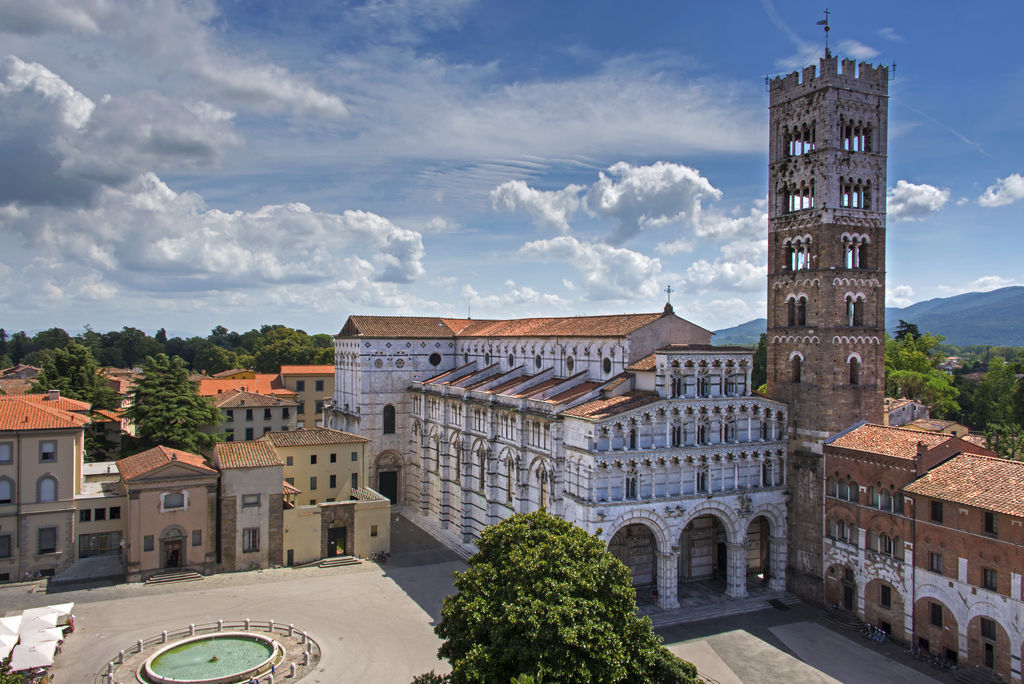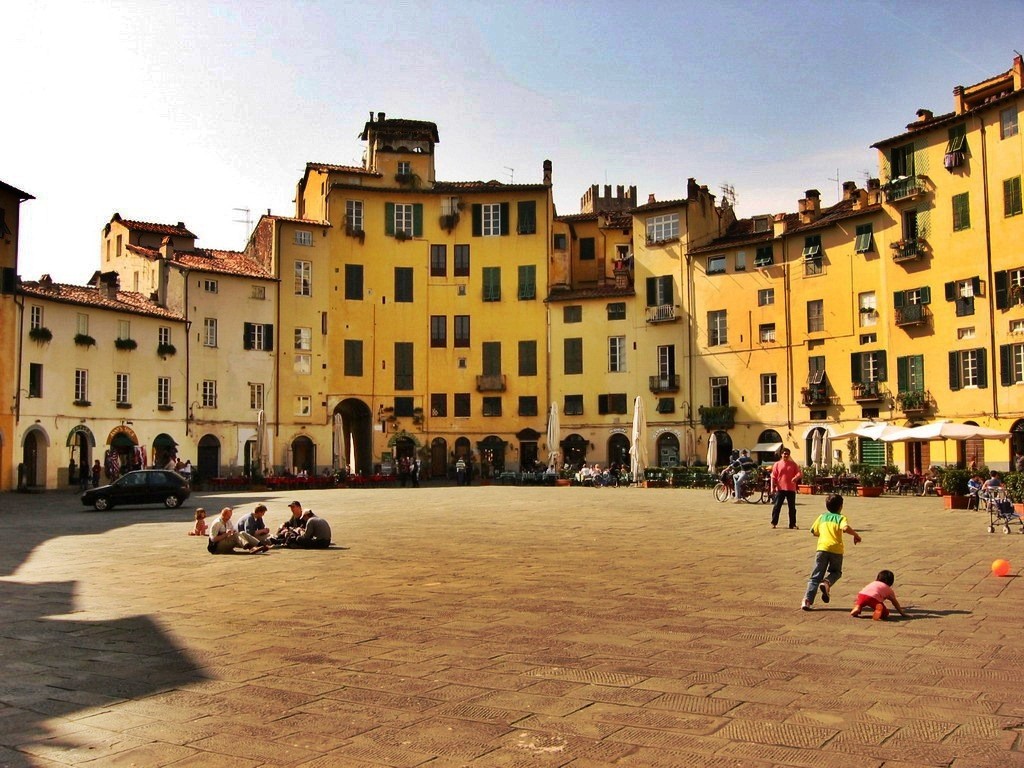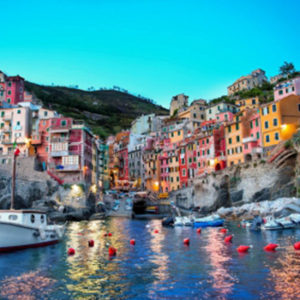Description
5 Terre – Monterosso, Manarola, Corniglia, Vernazza & Riomaggiore
A whole, intense and unforgettable day dedicated to the discovery of one of the most amazing and enchanting landscapes in the World.
Five villages, suspended between sea and land, hanging from sheer cliffs surrounded by hills and vineyards, which will allow us to immerse into a little piece of Heaven. Our visit will start at daybreak, with the arrival to La Spezia, where we will find a motor vessel waiting for us: we will have the possibility to admire this amazing landscape from the outside, like in a postcard. We will stop either in LUCCA for 120 minutes
Our first stop will be Portovenere, an old town at the end of the promontory where the built-up area still has the typical appearance of a Ligurian Village. Here we will have some free time to take a stroll among the narrow houses and the small alleys before leaving again to Monterosso .
As soon as we land at Monterosso we will be overcome by its enchanting beaches and luxuriant vegetation that surrounds the little village.
After a short informative walk, we will have some free time to enjoy a tasty lunch based on seafood in a typical local restaurant and to dive into irresistible crystal-clear waters.
Our journey will resume towards the last stop, Vernazza, a seaside town surrounding a little natural port, declared UNESCO World Heritage Site. Here we will have free time to relax, enjoying a delicious coffee or ice-cream in the main square, while observing activities of fishermen and locals.
We will leave this little piece of heaven on the boat that will accompany us first to Portovenere and then to La Spezia where, back to reality, we will catch the way to go back to Florence.
In addition to comfortable clothes, we recommend to bring with you swimwear and a hat to protect against the sun…!!!
The 5 Lands – The 5 Terre
The Cinque Terre is a rugged portion of coast on the Italian Riviera. It is in the Liguria region of Italy, to the west of the city of La Spezia. “The Five Lands” is composed of five villages: Monterosso al Mare, Vernazza, Corniglia, Manarola, and Riomaggiore. The coastline, the five villages, and the surrounding hillsides are all part of the Cinque Terre National Park and is a UNESCO World Heritage Site.
Over the centuries, people have carefully built terraces on the rugged, steep landscape right up to the cliffs that overlook the sea. Part of its charm is the lack of visible corporate development. Paths, trains and boats connect the villages, and cars cannot reach them from the outside. The Cinque Terre area is a very popular tourist destination.
All the towns slope down to sea-level except for Corniglia, which is perched on top of a tall cliff. Four of the towns possess an old-world charm. The northern-most town, Monterosso, is completely different. It is very beachy-resorty, with not much to see beyond the boardwalk apart from modern apartment blocks and hotels – nothing like the narrow, crooked streets of the other towns, lined with colorful old houses stacked haphazardly on top of each other.
The main attraction of the Cinque Terre is the landscape. Mediterranean herbs and trees grow spontaneously from the top of the hills down to the water level. Well embedded in this magnificent natural scenery, one can admire the intense human activity of the ancestors, when the wine terraces were built. Tourists can enjoy the scenery, walk through the towns (or between them) or hiking on the paths and enjoying the local atmosphere.
Lucca
Architecture
Walls, streets, and squares
The walls encircling the old town remain intact, even as the city expanded and modernized, unusual for cities in the region. Initially built as a defensive rampart, once the walls lost their military importance they became a pedestrian promenade, the Passeggiata delle Mura Urbane, a street a top the walls linking the bastions. It passes through the Bastions of Santa Croce, San Frediano, San Martino, San Pietro/Battisti, San Salvatore, La Libertà/Cairoli, San Regolo, San Colombano, Santa Maria, San Paolino/Catalani, and San Donato; and over the gates (Porte): San Donato, Santa Maria, San Jacopo, Elisa, San Pietro, and Sant’Anna. Each of the four principal sides of the structure is lined with a different tree species than the others.
The town includes a number of public squares, most notably the Piazza dell’Anfiteatro, site of ancient Roman amphitheater; but also Piazzale Verdi; Piazza Napoleone’; and Piazza San Michele.
Puccini’s statue – San Michele in Foro
Palaces, villas, houses, offices, and museums[edit]
- Ducal Palace: built on the site of Castruccio Castracani‘s fortress. Construction began by Ammannati in 1577–1582, and continued by Juvarra in the eighteenth century
- Pfanner Palace
- Villa Garzoni, noted for its water gardens
- Casa di Puccini: House of the opera composer, at the nearby Torre del Lago, where the composer summered. A Puccini opera festival takes place every July–August
- Torre delle Ore: (“The Clock Tower”)
- Guinigi Tower and House: Panoramic view from tower-top balcony with oak trees
There are many medieval, a few as old as the eighth century, basilica-form churches with richly arcaded façades and campaniles
- Duomo di San Martino: St Martin’s Cathedral
- Basilica di San Frediano
- San Michele: church at Antraccoli, founded in 777, it was enlarged and rebuilt in the twelfth century with the introduction of a sixteenth-century portico

